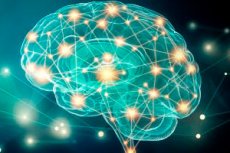
布莱根妇女医院研究人员的一项新研究表明,大脑中可能存在一个与心率减慢和抑郁症相关的共同网络。在分析了14名无抑郁症状患者的数据后,该团队发现,使用经颅磁刺激 (TMS) 刺激与抑郁症相关的大脑区域也会影响心率。这表明医生或许无需使用脑部扫描就能针对这些区域进行治疗,而脑部扫描并非总是可用。该研究结果发表在《自然心理健康》杂志上。
“我们的目标是找到一种更有效地运用TMS疗法的方法,确定合适的剂量,减缓心率,并确定大脑中最佳的刺激位置,”布莱根妇女医院健康部门和治疗性脑回路研究中心的资深研究作者Shan Siddiqui博士说道。Siddiqui博士表示,这个想法源于在克罗地亚举行的一次会议上,来自荷兰的研究人员展示了关于心脑连接的数据。
“他们证明,TMS 不仅能暂时降低心率,而且刺激部位也很重要,”Siddiqui 补充道,并指出这项研究最让他兴奋的地方在于,它有可能让这种高度针对性的抑郁症疗法惠及世界其他地区。“我们在波士顿有很多技术可以帮助人们控制症状,”他说道,“但其中一些技术以前很难推广到世界其他地区。”
Siddiqui 与布莱根治疗性脑回路研究中心的同事以及本文主要作者、理学硕士 Eva Dijkstra 合作完成了这项研究。Dijkstra 是一名博士生,她从荷兰来到布莱根,希望将他们在心脑连接方面的研究成果与 CBCT 团队在脑回路方面的研究成果结合起来。
研究人员观察了14名受试者的功能性核磁共振扫描结果,并根据此前关于连接性和抑郁症的研究,确定了他们大脑中被认为是抑郁症治疗最佳目标的区域。每位受试者被分配了10个大脑区域,这些区域既是抑郁症治疗的最佳区域(“连接区域”),也是次优区域。随后,研究人员观察了每个区域受到刺激时心率的变化。
“我们想看看相关区域是否存在心脑连接,”迪杰斯特拉说,“在14个可用数据集中,我们发现其中12个数据集只需在脑刺激期间测量心率,就能高精度地定位与抑郁症相关的区域。”
迪杰斯特拉指出,这一发现可以通过选择大脑中个性化的刺激位置来帮助个性化 TMS 抑郁症治疗,并且由于不需要进行初步的 MRI 检查,因此更容易获得。
Siddiqi 补充说,这项研究的结果还可以用于开发未来对心脏病专家和急诊室医生有用的治疗方法。
这项研究的一个局限性是,它只在少数人身上进行,而且研究人员并没有刺激大脑的所有可能区域。
该团队的下一个目标是找出需要刺激大脑的哪些区域才能使心率变化更加一致。
迪克斯特拉的荷兰团队目前正在开展一项更大规模的研究,涉及150名抑郁症患者,其中许多人患有难治性抑郁症。该研究的数据将于今年晚些时候进行分析,这可能使该研究更接近临床应用。

